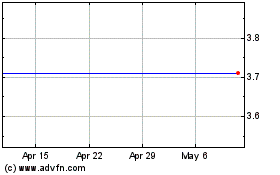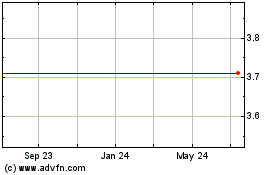Fluidigm Corporation (Nasdaq:FLDM), an innovative
biotechnology tools provider with a vision to improve life through
comprehensive health insight, today announced that researchers at
Weill Cornell Medicine have identified a phenotype of immune cell
activity in the lungs of patients infected with SARS-CoV-2, the
virus that causes COVID-19, that is distinct from activity observed
with other respiratory infections. This phenotype has been
identified based on spatial analysis of lung tissue at the
single-cell level throughout the disease continuum. The analysis
was conducted using Imaging Mass Cytometry™ (IMC™) on the
Fluidigm® Hyperion™ Imaging System.
Results of the study, which have not yet been peer-reviewed, are
available online through the medRxiv pre-print service.
“The unique spatial aspects of Imaging Mass Cytometry enabled us
to view not only the structure of the tissue but also the interplay
between infected cells and the immune system in COVID-19 patients,”
said Olivier Elemento, PhD, Director of the Englander Institute for
Precision Medicine and Cornell University Professor of Physiology
and Biophysics, a lead researcher of the study. “The diverse range
of tissue samples offered incredible insight into the mechanisms of
disease progression in these patients, and the rich dataset
provided our computational biologists with an opportunity to
interpret changes in tissue architecture as well as detect and
understand patterns that may provide insights into future
approaches to therapies.”
This study utilized the Fluidigm reagents portfolio to label
antibodies in a custom-designed panel of 36 biomarkers to capture
different immune and stromal compartments of the lung. These
antibodies were then used to label lung tissue sections obtained
from patients who had died with acute respiratory distress syndrome
(ARDS) following influenza, bacterial pneumonia, or COVID-19
respiratory distress syndrome, and also from healthy individuals
for whom lung tissue was available.
Samples from COVID-19 patients were categorized as early or late
depending on whether death occurred 16–30 days or 31–44 days after
the onset of respiratory symptoms, respectively. The Hyperion
Imaging System analysis generated 237 highly multiplexed images
identified across all specimens.
Among key findings of the study:
- A significant reduction in alveolar lacunar space, increased
immune infiltration, and apoptosis-mediated cell death were
observed in all diseased samples compared with those from healthy
lungs.
- Neutrophil infiltration was increased in ARDS and early
COVID-19 compared with normal lung, but appeared to be a hallmark
of bacterial pneumonia, while a high degree of inflammation,
infiltration of interstitial macrophages, complement activation,
and fibrosis was characteristic of COVID-19.
- While late COVID-19 disease specifically displays hallmarks of
tissue healing, the high COVID-19 mortality rate suggests that
complement-activation-induced damage to the lung in concert with
other immunological factors may lead to abnormal blood clotting in
the lungs, which can lead to death.
Study findings agree with other recent studies suggesting that a
type of pathophysiological response found in patients with ARDS due
to influenza or bacterial pneumonia is similar to that found in
those with COVID-19. However, in contrast with those studies, the
Weill Cornell Medicine findings suggest that the hyperinflammatory
phenotype as assessed by cytokine levels in peripheral blood is
specific to COVID-19.
These findings suggest that early interventions that reduce
off-target immune response or activators of the complement cascade
could improve outcomes for COVID-19 patients.
“Understanding the pathology of COVID-19 lung disease is
essential for developing interventions and treatment regimens that
can improve patient outcomes and reduce mortality,” said Chris
Linthwaite, President and CEO of Fluidigm. “This study adds to a
growing body of data underscoring the importance of tissue
architecture and three-dimensional cell-to-cell interactions in
critical biologic and pathophysiologic process.
“Our robust IMC platform is uniquely suited to exploring these
interactions with single-cell resolution. Significantly, in this
study, IMC analyses uncovered novel interactions and cellular
phenotypes that add important new insights into mechanisms of
COVID-19 pathology, and these insights may help drive clinical
practices that can improve patient outcomes.”
About Imaging Mass CytometryImaging Mass
Cytometry is setting a new standard in tissue imaging,
significantly simplifying high-multiplex panel design and
eliminating the impact of tissue autofluorescence by using highly
pure metal tags for which signals are separated by mass instead of
by wavelength. Incorporating an easy-to-use immunohistochemistry
workflow that simultaneously detects many proteins in a single
scan, IMC is ideal for uncovering new insights in health and
disease and empowering the development of better diagnostics and
more effective therapies.
About FluidigmFluidigm (Nasdaq:FLDM)
focuses on the most pressing needs in translational and clinical
research, including cancer, immunology, and immunotherapy. Using
proprietary CyTOF® and microfluidics technologies, we develop,
manufacture, and market multi-omic solutions to drive meaningful
insights in health and disease, identify biomarkers to inform
decisions, and accelerate the development of more effective
therapies. Our customers are leading academic, government,
pharmaceutical, biotechnology, and plant and animal research
laboratories worldwide. Together with them, we strive to increase
the quality of life for all. For more information,
visit fluidigm.com.
Fluidigm, the Fluidigm logo, CyTOF, Hyperion, Imaging
Mass Cytometry and IMC are trademarks and/or registered trademarks
of Fluidigm Corporation in the United
States and/or other countries. Fluidigm products are provided
for Research Use Only. Not for use in diagnostic procedures.
Forward-Looking Statements for FluidigmThis
press release contains forward-looking statements within the
meaning of the Private Securities Litigation Reform Act of 1995,
including, among others, statements regarding the benefits of
Fluidigm technology for research and development of COVID-19
therapies. Forward-looking statements are subject to numerous risks
and uncertainties that could cause actual results to differ
materially from currently anticipated results, including but not
limited to risks relating to company research and development,
sales, marketing, and distribution plans and capabilities;
reductions in research and development spending or changes in
budget priorities by customers; potential product performance and
quality issues; intellectual property risks; and competition.
Information on these and additional risks and uncertainties and
other information affecting Fluidigm business and operating
results is contained in Fluidigm’s Annual Report on Form 10-K for
the year ended December 31, 2019, and in its other filings
with the Securities and Exchange Commission. These
forward-looking statements speak only as of the date
hereof. Fluidigm disclaims any obligation to update these
forward-looking statements except as may be required by law.
Available InformationWe use our website
(fluidigm.com), investor site (investors.fluidigm.com), corporate
Twitter account (@fluidigm), Facebook page (facebook.com/Fluidigm),
and LinkedIn page (linkedin.com/company/fluidigm-corporation) as
channels of distribution of information about our products, our
planned financial and other announcements, our attendance at
upcoming investor and industry conferences, and other matters. Such
information may be deemed material information, and we may use
these channels to comply with our disclosure obligations under
Regulation FD. Therefore, investors should monitor our website and
our social media accounts in addition to following our press
releases, SEC filings, public conference calls, and webcasts.
Contacts: Media: Mark Spearman
Senior Director, Corporate Communications 650 243
6621mark.spearman@fluidigm.com
Investors: Agnes Lee Vice President, Investor
Relations 650 416 7423 agnes.lee@fluidigm.com
Fluidigm (NASDAQ:FLDM)
Historical Stock Chart
From Mar 2024 to Apr 2024

Fluidigm (NASDAQ:FLDM)
Historical Stock Chart
From Apr 2023 to Apr 2024
